Project Managers Find New Rhythm at PMI® Global Congress’ First Agile Open Jam
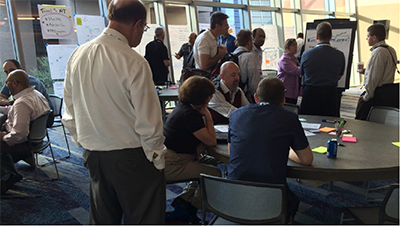
What happens with PMI conference attendees encounter a new way to interact about Agile?
We found out when I hosted another first: an Agile Open Jam with global project managers. With the help of some excellent co-facilitators, I conducted an Agile Open Jam at the PMI® Global Congress 2014-North America, with the theme of Business Analysis and Product Management in Agile.

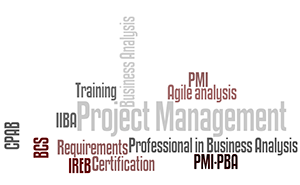
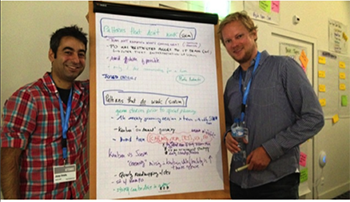

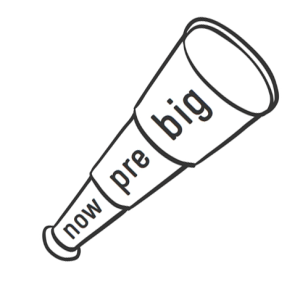
 If you’ve been a product manager for a few years, you already know what I’m about to say. Product management is a hard job. The most successful product managers share these traits:
If you’ve been a product manager for a few years, you already know what I’m about to say. Product management is a hard job. The most successful product managers share these traits: Are you headed to Agile 2014 this year? We are—and we are eager to introduce audiences there to our unique approach to agile requirements.
Are you headed to Agile 2014 this year? We are—and we are eager to introduce audiences there to our unique approach to agile requirements.
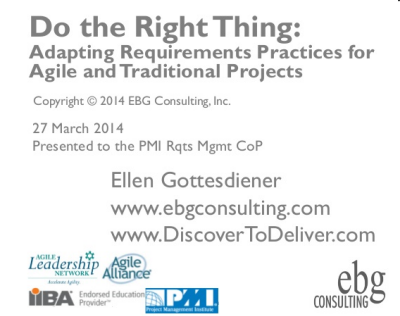 Last month I presented a webinar to the PMI® (Project Management Institute) Requirements Management Community of Practice: “Do the Right Thing: Adapting Requirements Practices for Agile and Traditional Projects.”
Last month I presented a webinar to the PMI® (Project Management Institute) Requirements Management Community of Practice: “Do the Right Thing: Adapting Requirements Practices for Agile and Traditional Projects.” Whether you are agile or more traditional, your challenge is the same: In order to remain relevant in today’s market, you have to discover and deliver the right thing at the right time. To do this successfully, you need to elicit customer needs and quickly choose from among many competing voices and options to determine what is truly essential and what can wait for a future release. That means selecting the requirements development and management activities that are most effective for your particular situation–whether those practices are in your current toolbox or not.
Whether you are agile or more traditional, your challenge is the same: In order to remain relevant in today’s market, you have to discover and deliver the right thing at the right time. To do this successfully, you need to elicit customer needs and quickly choose from among many competing voices and options to determine what is truly essential and what can wait for a future release. That means selecting the requirements development and management activities that are most effective for your particular situation–whether those practices are in your current toolbox or not.